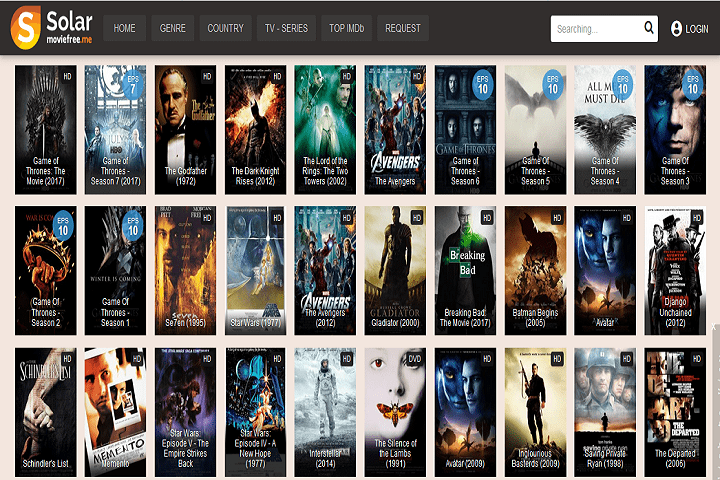Business
Virtual Call Center Software – A Complete Guide
Virtual call center software is making high waves in the call center industry. It is winning the hearts of a lot of businesses with each passing day.

Virtual call center software is making high waves in the call center industry. Whether it is a low-cost set-up or human-free service delivery, it is winning the hearts of a lot of businesses with each passing day.
Using VoIP enables a business to work from anywhere. Rather than using a particular office ecosystem, your agents can work from any third-party location. This third-party location can be anything depending upon the need of the hour. Despite operating from dispersed locations, a virtual call center works as a cohesive unit and keeps things/operations organized and sorted. All the business data is stored in a centralized place.
All these benefits are admittedly hard to ignore. That is why Amazon has also started using virtual call center software for its global business and got succeeded in reducing overhead costs while delivering par-excellence customer service.
If you are still confused about its viability, here are some of the critical information to have better clarity.
Table of Contents
1. Virtual Call Center v/s On-site Call Center
This is a highly debatable question. But, we might help you to have a clear picture of the below-mentioned points.
2. Which costs how much?
On-site call center comes with high real-estate costs, more significant overheads, and hefty calling charges. If we observe, setting up an on-site call center in a B-grade city might exert a whopping $2.440 per person financial burden, which is way too high to handle for start-ups.
Apart from set-up, it demands investments in maintenance as well. Not to forget the high calling charges, if you are using the PSTN-based telephony for your on-site call center. All these expenses make the on-site call center a costly and time-consuming affair.
On the other hand, using virtual numbers and cloud-based call center software helps you eliminate all these expenses and allows you to be plug-and-play ready without downsizing.

3. Which helps in global expansion?
Going global is a pricey yet crucial trend that every growing business should adapt to stay relevant in today’s competitive world. Doing this is a bed of roses with an on-site call center as you have owned a physical office in every operative foreign land. This process is both expensive and time-consuming.
You need not burn cash and time for going global if you are using a virtual number. You can use it from anywhere on any device as long as you have a stable internet connection.
4. Can you set up a virtual chatbot with it?
Though most of the virtual agents are humans only, technology is sending them to the backseat by setting up AI-powered chatbots. Most of the virtual numbers are using chatbots as their virtual call center agents. IVR or Interactive Voice Response is making this possible. With the help of this feature, your computer chats with customers via voice and assists them, while the keypad takes input from the user.
This type of 100% human-free customer assistance enables a business to work even when there is a crunch of team members.
5. Things to keep in mind while setting-up virtual call center
There is no second opinion that virtual call center software is a boon for today’s call center industry. However, specific vital points should be kept in your mind while taking it on board if you want to have hassle-free operations and a streamlined workflow.
6. Make sure to implement stringent remote working policies.
As you will not be able to monitor the functionality of your virtual agents around the clock, implementing stringent remote working policies is what you need to ensure quality and timely work. Make sure that each virtual agent is completing its minimum working hours and attending to the average number of calls before they sign off for the day.

Though many leading US phone number comes with various in-built performance monitoring tools, you must understand the need for timely completion of tasks that are assigned to your remote employees. For this, keep checking the reports being generated through these tools.
7. Pick the one which comes with greater flexibility and integration.
When you are choosing the business phone system for your virtual call center, choosing a flexible one is the best choice. With great flexibility, you are free to expand the existing call center software with growing business needs.
Alongside this, you should also keep in mind that the chosen one should have great in-built CRM integrations to make operations sorted from ground level and handle all the business aspects from a centralized place.
As your virtual agents will be working from scattered locations, in-built integration helps them to collect whatever information is required without leaving their seats.
8. Check the POP location of the service provider.
When you are setting up a call center, you should never overlook the call quality. As all the actions in a virtual call center ecosystem will be taking place over the internet, you should make sure that your service provider should have proper POP or point of presence in more than one continent.
The closer you will be to the POP of your service provider, the better will be the voice quality. So, don’t hesitate to inquire about it beforehand.
We think that by now, all your doubts and queries about virtual call center software must be clear. So, make a move and shift to the cloud.
Helpful Resources:
1. Why is Cybersecurity Important For Enterprises?
2. 5 Website Security Tips Every Employee Should Know
3. Get VPS Hosting For Your Websites For Better Results
4. Top Ten Blockchain Applications That Are Transforming Industries
5. 6 Best Wireless Security Cameras You Can Get
6. How to Protect WebSites Against Attackers or Hackers by using “X-Security Headers”
Business
Navigating the Process of Selling Deceased Estate Shares
This article aims to provide a comprehensive guide to selling shares from a deceased estate. Process of Selling Deceased Estate Shares.

Table of Contents
1. Understanding the Basics of Selling Deceased Estate Shares
Dealing with a deceased estate can be a challenging and emotional process, especially when it comes to handling financial assets like shares. This article aims to provide a comprehensive guide to selling shares from a deceased estate.
2. What are Deceased Estate Shares?
Deceased estate shares refer to the stocks and shares that were owned by an individual who has passed away. These shares become part of the deceased’s estate and are subject to the terms of their will or estate plan.
3. The Importance of Valuing the Shares
The first step in selling deceased estate shares is to obtain a current valuation. This valuation is crucial for several reasons: it helps in distributing the estate among beneficiaries, it may be necessary for tax purposes, and it gives an idea of the market value of the shares.
4. Legal Requirements and Executor Responsibilities
The executor of the estate plays a pivotal role in the management and distribution of the deceased’s assets. This section will cover the legal responsibilities and steps the executor needs to take to lawfully sell the shares.
5. Obtaining Probate
Before any action can be taken with the shares, it’s often necessary to obtain probate. Probate is a legal process that confirms the executor’s authority to deal with the deceased’s assets.
Transferring Shares into the Executor’s Name
Once probate is granted, shares may need to be transferred into the name of the executor. This process varies depending on the company and the type of shares.
6. The Process of Selling Shares
After completing legal formalities, the executor can proceed with selling the shares. This section will outline the steps involved in this process, including choosing a brokerage or financial service, understanding market conditions, and making informed decisions.
Deciding on the Right Time to Sell
Timing can significantly impact the returns from selling shares. Executors need to consider market conditions and financial advice to determine the best time to sell.
Completing the Sale
This subsection will detail the actual process of selling shares, including placing orders, handling transaction fees, and ensuring all regulatory requirements are met.

7. Navigating Tax Implications and Reporting
Managing tax obligations is a critical aspect of selling deceased estate shares. This section will explain the potential tax implications and the importance of accurate reporting for both capital gains tax and inheritance tax considerations.
Understanding Capital Gains Tax Responsibilities
When shares are sold, any profit made from the time of the deceased’s passing to the sale date may be subject to capital gains tax. Executors need to be aware of these implications and plan accordingly.
Inheritance Tax Considerations
In some jurisdictions, the value of the deceased estate’s shares might impact inheritance tax calculations. It’s essential for executors to understand these aspects in order to ensure compliance with tax laws.
8. Common Challenges and How to Overcome Them
Selling deceased estate shares can present unique challenges. This section will discuss common issues such as disputed wills, fragmented information about the shares, and market volatility.
Dealing with Disputed Wills and Beneficiary Disagreements
Disputes over the will or disagreements among beneficiaries can complicate the process. Executors must handle these situations delicately and legally.
Managing Market Volatility
Shares can be subject to market fluctuations. Executors should be prepared for this volatility and may need to consult financial advisors to navigate these waters effectively.
9. Tips for Executors Handling Deceased Estate Shares
This section will provide practical advice for executors, including the importance of seeking professional advice, keeping thorough records, and communicating clearly with beneficiaries.
Seeking Professional Financial and Legal Advice
The complexity of selling shares from a deceased estate often necessitates professional advice. This can range from legal counsel to financial advisory services.
Record Keeping and Communication with Beneficiaries
Maintaining transparent and thorough records is crucial. Executors should also prioritize clear and consistent communication with all beneficiaries to avoid misunderstandings.
Conclusion
Selling shares from a deceased estate is a responsibility that requires careful attention to legal, financial, and interpersonal dynamics. By understanding the process, staying informed about tax obligations, and tackling challenges head-on, executors can fulfill their duties effectively and respectfully.
-

 Instagram4 years ago
Instagram4 years agoBuy IG likes and buy organic Instagram followers: where to buy them and how?
-

 Instagram4 years ago
Instagram4 years ago100% Genuine Instagram Followers & Likes with Guaranteed Tool
-

 Business5 years ago
Business5 years ago7 Must Have Digital Marketing Tools For Your Small Businesses
-

 Instagram4 years ago
Instagram4 years agoInstagram Followers And Likes – Online Social Media Platform
















